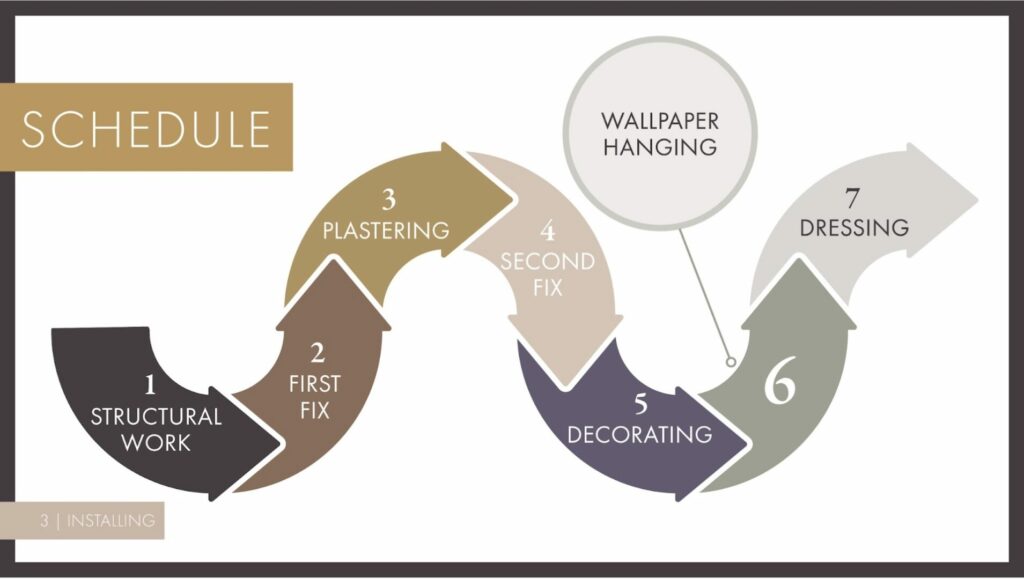How to manage scheduling successfully
Here’s the thing…
Scheduling is a potential one of the worst nightmares for you on a site. It’s not so relevant for a private house that doesn’t have other stuff going on but it’s very relevant for a project where you’ve got multiple trades/crafts doing their thing. On projects on building sites there are thousands of decisions daily and everyone is juggling, there is a lot of activity that is happening that is out of your control and it’s the old saying, ‘people are problems.’ It only takes one person not to turn up when they’re supposed to to throw the sequence of the job out. It only takes a problem with the product not showing up to throw the scheduling date out.
“Control the controllables would be my summary when it comes to scheduling,” says Mick Wells.
How we at Wells Interiors like to deal with scheduling is to do a lot of pre-site checks ourselves to see it for ourselves. We like to think we are very flexible but we aren’t immune like all other companies. There are certain times of the year when we are a lot busier than others. Our rule really is if you book a day, you pay a deposit and you get that day. That’s how it works. Changing your date, especially last minute, is where issues lie and you potentially might get disappointed about not getting your day.
How to avoid last-minute date changes…
- Communicate – clearly and openly.
- Be realistic, you have to be realistic.
- We have a saying that we might not like the news, but we want to hear the news straight away. As soon as you think you’ve got a delay or something’s not right, let us/the installer know. Problems arise when information is withheld, so it’s better to be honest and upfront from the get-go. If you do that then you have more of a chance of achieving your actual, real date rather than the installer arriving and there is no skirting, it’s not decorated and it’s far from ready = disaster! To re-book the date in, chances are you’re going to be disappointed because you’re not going to get the date you want. It would be much better to say, “Okay, that date is no longer going to work. Can we book you in for a later date and then we know it will be 100% ready.”
- The same applies when it comes to the delivery of materials on site. They need to be ideally on site one week before the start date to avoid any delays. That’s something you’ve got control over and you can pressure the manufacturers and brands for a delivery date and track them too.
- Don’t rush anything that will affect the finish, because when it is all said and done that’s what the client is going to be looking at, and that’s what you’ll get judged on.
Wallpaper installation is its own specialist craft, requiring its own stage in the schedule. Below, we have shared a slide from our CPD which shows the point at which the installation should happen. Installation should not be done in the same step as decoration – and you should ideally not use the same tradesperson. Any processes that create mess or dust should happen BEFORE the wallpaper installation – and of course, the site should be tidied before the paper hanger arrives. For example, there is no point getting the installer in for a bedroom installation if the ensuite still requires plumbing, marble installation etc.
The only stages that should remain to be done after installation should be soft furnishings and the electrician for a second fix / to install plates only. If any of the work that is still left to do will affect the wallcovering finish, do not proceed; We can’t stress this highly enough.






